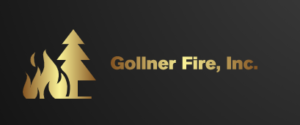Part II of Paper on Commodity Classification Published in the Fire Safety Journal
Part II of our paper, “Warehouse commodity classification from fundamental principles. Part II: Flame heights and flame spread”, has recently been published in the Fire Safety Journal. The image at the right shows a research approach to the warehouse fire problem. The two smaller scales studied in this work are shown by the dashed box. You can follow a link to the article at: doi:10.1016/j.firesaf.2011.05.002.
Abstract:
In warehouse storage applications, it is important to classify the burning behavior of commodities and rank them according to their material flammability for early fire detection and suppression operations. In this study, a preliminary approach towards commodity classification is presented that models the early stage of large-scale warehouse fires by decoupling the problem into separate processes of heat and mass transfer. Two existing nondimensional parameters are used to represent the physical phenomena at the large-scale: a mass transfer number that directly incorporates the material properties of a fuel, and the soot yield of the fuel that controls the radiation observed in the large-scale. To facilitate modeling, a mass transfer number (or B-number) was experimentally obtained using mass-loss (burning rate) measurements from bench-scale tests, following from a procedure that was developed in Part I of this paper.
Two fuels are considered: corrugated cardboard and polystyrene. Corrugated cardboard provides a source of flaming combustion in a warehouse and is usually the first item to ignite and sustain flame spread. Polystyrene is typically used as the most hazardous product in large-scale fire testing. The nondimensional mass transfer number was then used to model in-rack flame heights on 6.1–9.1 m (20–30 ft) stacks of ‘C’ flute corrugated cardboard boxes on rack-storage during the initial period of flame spread (involving flame spread over the corrugated cardboard face only). Good agreement was observed between the model and large-scale experiments during the initial stages of fire growth, and a comparison to previous correlations for in-rack flame heights is included.
Part I of this paper has also been published in the Fire Safety Journal and can be found at: doi:10.1016/j.firesaf.2011.03.002
default